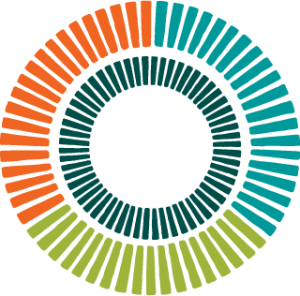While certain sectors of the economy have rebounded more quickly than expected, the trajectory of the recovery is still unclear. Rising COVID-19 cases in the U.S. and Europe, stalled negotiations around much-needed fiscal stimulus, and election-related volatility are top of mind as we enter the fourth quarter. While the third quarter rewarded investors with mostly positive returns, September results were largely in the red as these concerns were reflected in market performance. In Europe and the United Kingdom, renewed uncertainty around Brexit further added to investor caution.
There is no consensus as to the forward-looking shape of the recovery. Some argue that a “V” scenario is in the works, but an equal number wonder whether this is sustainable given all of these headwinds. The newest alphabetic indicator—“K” —refers to the uneven aspect of the recovery, with certain segments of the population being hit much harder than others.
Housing was a bright spot in the quarter with pending home sales rising to a record high in August, according to the National Association of Realtors. Notably, growth in mortgage purchase applications (+39% y-o-y as of Sept. 25) is one of the few economic indicators that is above pre-COVID levels. Consumer confidence also improved; the Conference Board’s Index rose to the highest level in six months but remains well below pre-pandemic levels. The unemployment rate, which peaked at 14.7% in April, fell to 8.4% in August. However, of the 22 million jobs lost from February to April, only 11 million have been added since. This compares to a loss of 9 million from 2007-09. Lower-income, less-skilled, and tourism-related jobs have been the hardest hit, furthering concerns over the widest income inequality gap in history. The leisure and hospitality sectors have gained back only half of the jobs lost thus far, which has disproportionately affected lower-income workers. Initial jobless claims in state programs continue to surpass 800,000 per week, and continuing claims hover around 12 million (the average for 2017-19 was under 2 million).
Second quarter GDP was -31.4% (annualized), the largest decline on record. However, Federal Reserve projections announced at its August meeting call for 2020 real GDP to be -3.7% y-o-y, slightly better than the -6.5% figure expected in June. A September survey of economists by The Wall Street Journal estimates 3Q GDP growth will be nearly +24% (annualized).
Of note, the Fed altered its monetary policy framework in a meaningful way in August. It announced that its focus would be on employment and, given that inflation has been persistently below its 2% target, it said it would “aim to achieve inflation moderately above 2% for some time so that inflation averages 2% over time.” This comment suggests that the Fed will strive to raise inflation above the target for an unknown period of time. It further stated its intention to continue to support markets with asset purchases. Notably, Fed and market expectations are for no rate hikes until at least 2023. While inflation remains low (CPI: +1.3%; Core: +1.7% as of August) with few visible signs of acceleration, whispers of caution are beginning to emerge. The size of the deficit combined with expected fiscal stimulus could pave the way for higher inflation, and a continued trend toward de-globalization could raise the costs of production at home. The Congressional Budget Office estimates a $3.3 trillion deficit this year, three times that of last year.
Outside of the U.S., central banks continued to act aggressively to provide support via rate cuts, asset purchase programs, and other forms of stimulus. According to data from the International Monetary Fund, nearly $10 trillion in stimulus measures globally have been announced thus far, equating to 11% of global GDP. In addition to rising COVID-19 cases in the U.K. and Europe, uncertainty resurfaced around Brexit when Prime Minister Boris Johnson threatened to rewrite clauses pertaining to the treatment of Northern Ireland, leading to disarray and the resignation of the head of the government’s legal department. The OECD met in September and acknowledged that the global economy had performed better than expected but that tremendous uncertainty remains. It estimated that global GDP would contract by 4.5% in 2020, slightly better than the 6% drop predicted in June. And while the 2021 projection is for 5.0% growth, it expects “considerable differences” across countries. China is the only country that is expected to have positive growth in 2020 (+1.8%), and while the outlooks for the U.S. (-3.8%), and the euro zone area (-7.9%) have brightened from earlier projections, they remain uncertain, and forecasts have become more cloudy for many emerging market countries.
Closing Thoughts
The alphabet soup of recovery scenarios reflects a myriad of best guesses, and while hints of a “V” scenario were evident this summer, its likelihood has been dampened by rising COVID-19 cases and a knock-on effect on consumer confidence and demand, especially in hard-hit sectors of the economy. A tense election further adds to the potential for market volatility. Yields in fixed income are unquestionably paltry, with some questioning whether the asset class can play the role it has traditionally served. Equity valuations are expensive by multiple metrics, with the financial health of many businesses highly uncertain. This is a challenging environment for investors, yet Callan’s advice remains to adhere to a disciplined investment process that includes a well-defined long-term asset allocation policy.

